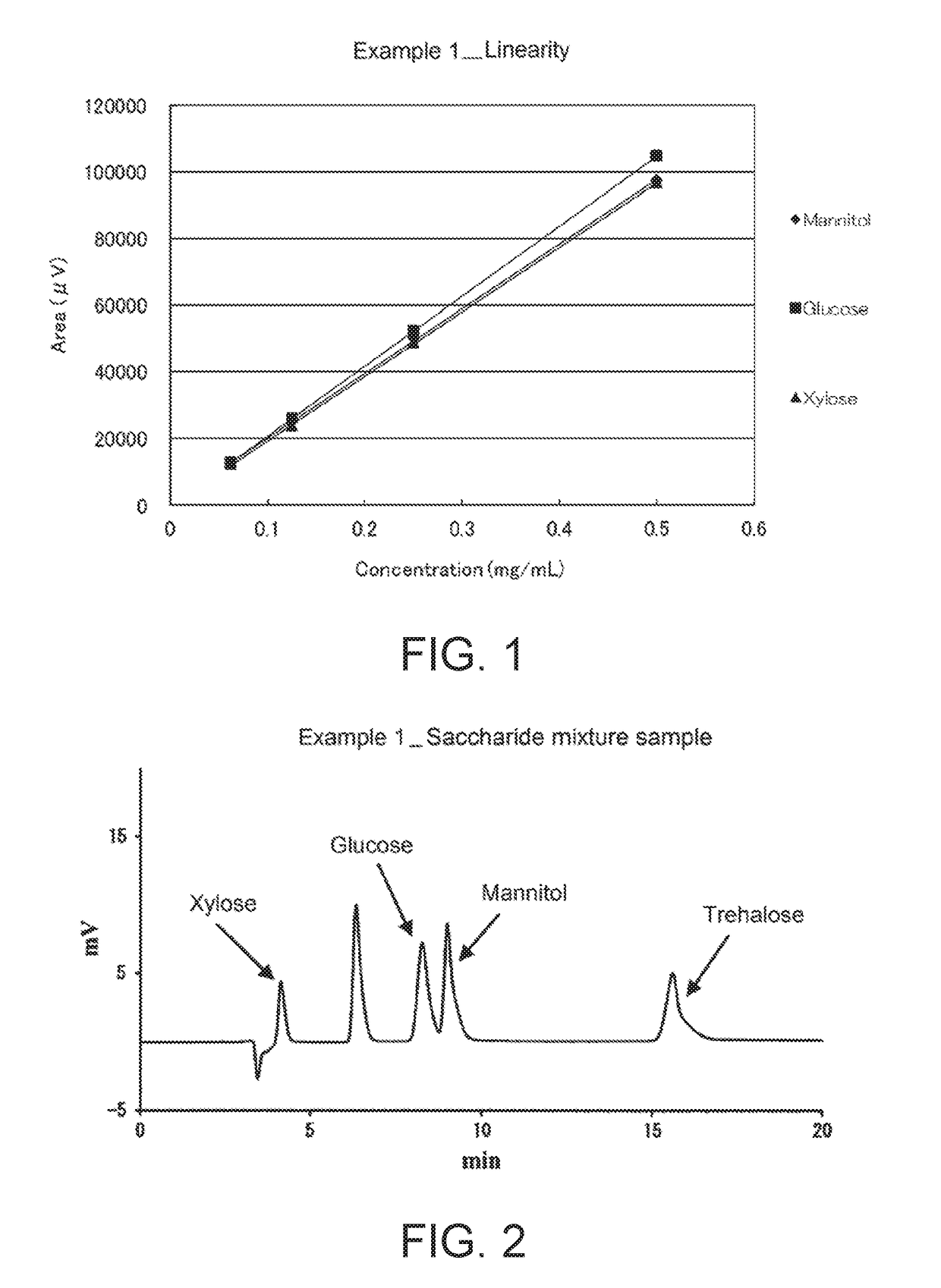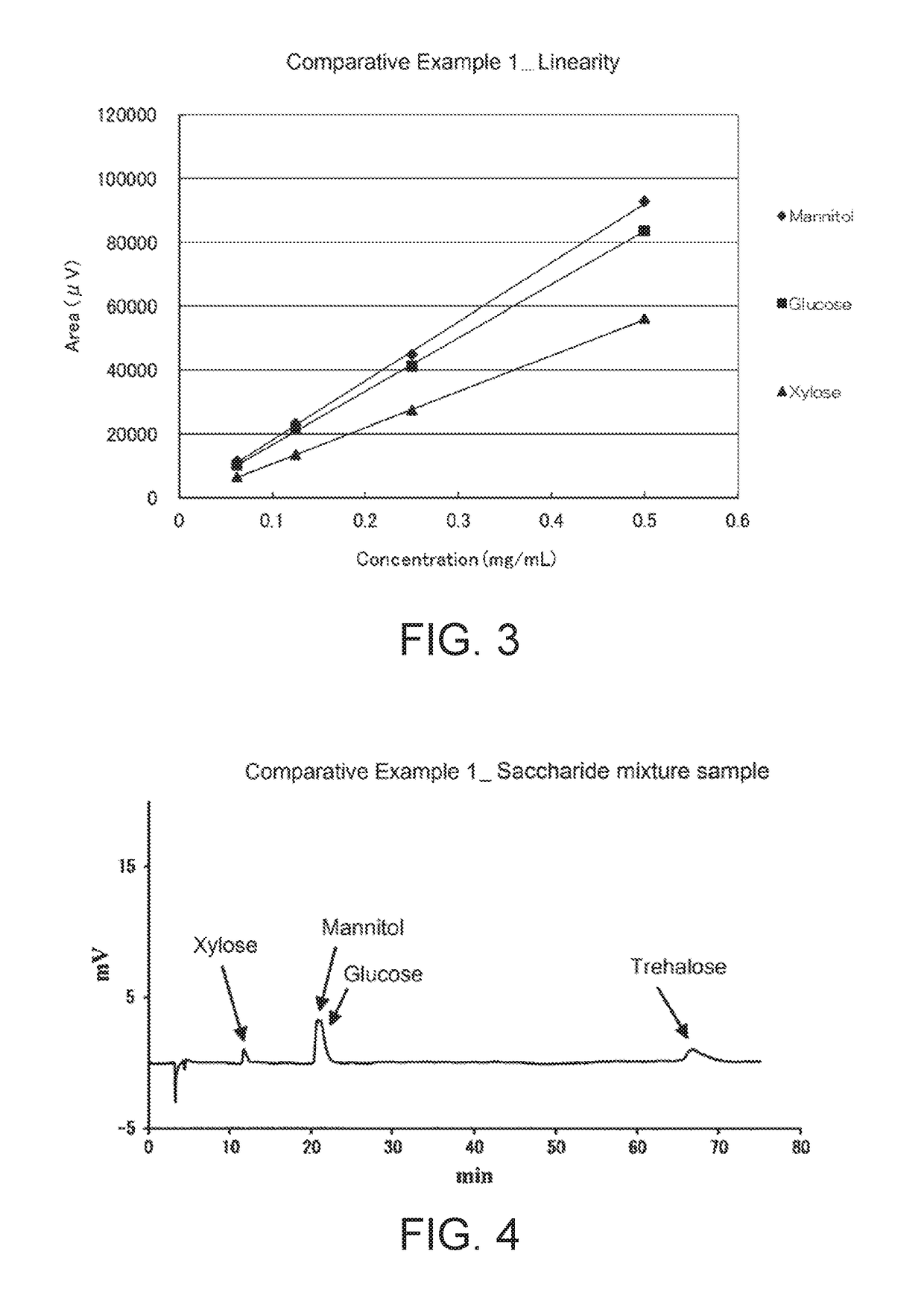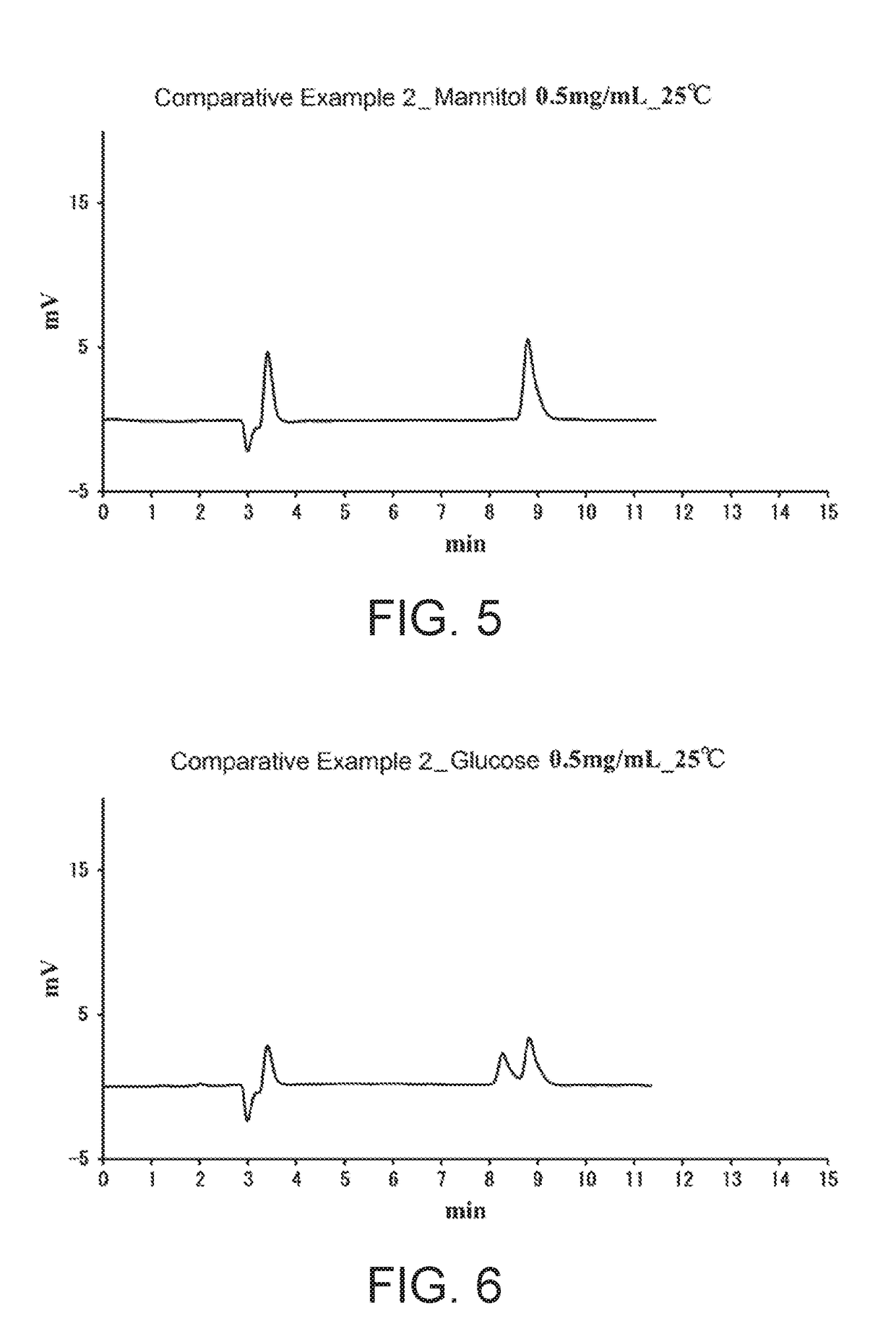Separating Agent for Chromatography, Chromatography Column, and Method for Separation by Chromatography
a separation agent and chromatography technology, applied in the field of chromatographic separation agents, chromatographic columns, and chromatographic separation methods, can solve problems such as serious problems, non-elution of reducing sugars from columns, and analysis of saccharides using a traditional separation agent as a stationary phase, so as to accelerate the conversion of anomers, prevent the effect of anomer separation and excellent separation performan
- Summary
- Abstract
- Description
- Claims
- Application Information
AI Technical Summary
Benefits of technology
Problems solved by technology
Method used
Image
Examples
example 1
(1) Synthesis of Separating Agent
[0045]Porous silica gel (10 g) with a mean particle diameter of 5 μm, a mean pore size of 12 nm, and a specific surface area of 300 m2 / g was dispersed in toluene (50 mL), and bis(2-hydroxyethyl)-3-aminopropyltrimethoxysilane (11 g) was added to the dispersion. The dispersion was refluxed at elevated temperature to allow the reaction to proceed for six hours. The dispersion was then cooled to room temperature, and the silica gel after the reaction was filtrated, washed, and dried under reduced pressure, to prepare a chromatographic separating agent of silica gel surface-modified with silane functional groups represented by the general formula:
[0046]The resulting separating agent was subjected to elemental analysis, and was found to contain 4.53% C, 0.56% H, and 0.57% N.
(2) Evaluation of Chromatographic Performances in HILIC Mode
[0047]The resulting separating agent was packed in a stainless steel column body (length: 250 mm; inner diameter: 4.6 mm) to ...
PUM
| Property | Measurement | Unit |
|---|---|---|
| Fraction | aaaaa | aaaaa |
| Fraction | aaaaa | aaaaa |
| Fraction | aaaaa | aaaaa |
Abstract
Description
Claims
Application Information
 Login to View More
Login to View More - R&D
- Intellectual Property
- Life Sciences
- Materials
- Tech Scout
- Unparalleled Data Quality
- Higher Quality Content
- 60% Fewer Hallucinations
Browse by: Latest US Patents, China's latest patents, Technical Efficacy Thesaurus, Application Domain, Technology Topic, Popular Technical Reports.
© 2025 PatSnap. All rights reserved.Legal|Privacy policy|Modern Slavery Act Transparency Statement|Sitemap|About US| Contact US: help@patsnap.com



